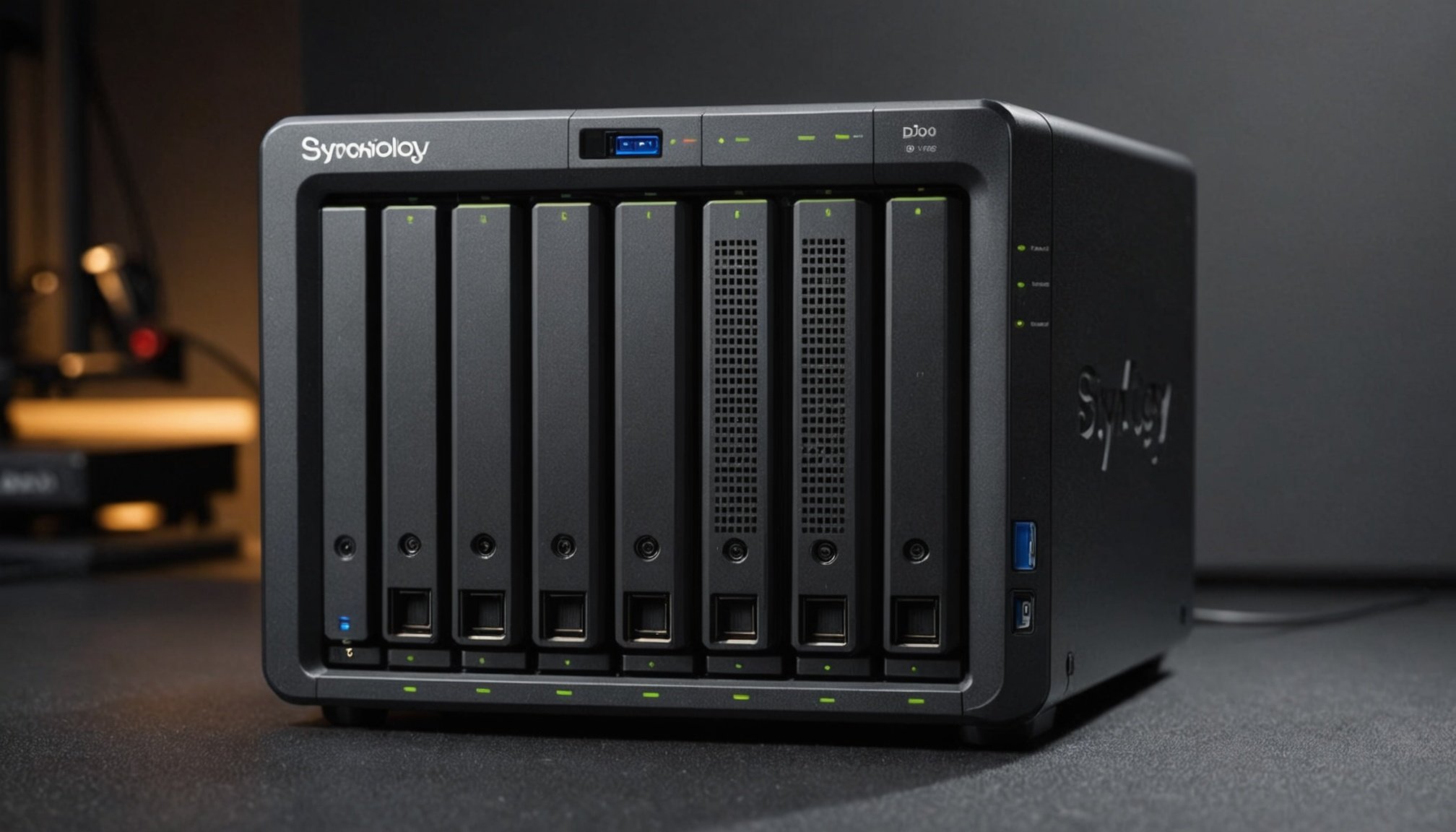Understanding the Importance of Data Integrity
Data integrity is pivotal in ensuring the reliability and trustworthiness of information, particularly within NAS (Network Attached Storage) systems. It encompasses principles that protect data from being altered, corrupted, or deleted unauthorizedly. In NAS environments, maintaining data integrity is crucial for safeguarding user information and ensuring seamless operations.
NAS data protection not only involves securing data from external threats but also includes addressing internal risks, such as power interruptions. These interruptions can lead to system crashes or incomplete data transfers, potentially corrupting files. When power interruptions occur, data being processed or transferred on NAS devices might not be saved correctly, leading to erroneous data states.
Topic to read : Optimize your lenovo legion 5 for effortless twitch streaming using obs studio: a complete guide
The Synology DS920+ is widely recognized for its high performance and multi-bay storage options. However, like many systems, it can be vulnerable during power outages. Without an uninterruptible power supply or proper shutdown procedures, there’s a risk of data loss or corruption. Implementing regular backups and surge protection devices can mitigate some of these risks, enhancing the integrity of stored data. Being proactive about these precautions is vital to avoid potential data disasters and ensure NAS systems continue functioning optimally even in adverse conditions.
Implementing Uninterruptible Power Supplies (UPS)
Setting up an uninterruptible power supply is an essential step in safeguarding your Synology DS920+ NAS device from unexpected power disruptions. A UPS provides temporary emergency power to connected devices in the event of a power outage, allowing for an orderly shutdown or continuous operation, thereby preventing potential data loss or hardware damage.
Additional reading : Mastering music production: the definitive blueprint for crafting your custom pc for fl studio
How a UPS Protects NAS Devices
A UPS configuration can protect NAS devices by supplying consistent, stable power. This acts as a buffer against surges or interruptions, ensuring that your NAS remains operational or has ample time to perform a safe shutdown.
Choosing the Right UPS
Selecting a suitable UPS involves assessing power requirements. Focus on the total wattage needed to support all connected devices. Additionally, check the UPS’s capacity to sustain power for the desired duration during an outage.
Configuring UPS with Synology NAS
To achieve optimal performance, configure your UPS with Synology DS920+ through the Synology DSM interface. This setup involves recognizing the UPS device, setting up notifications for power events, and specifying automatic shutdown procedures. By following these steps, you ensure your NAS device remains protected under a range of power scenarios.
Configuring RAID Settings for Resiliency
Setting up RAID configuration on your NAS can greatly enhance data redundancy and protection. The Synology DS920+ supports multiple RAID levels, each offering distinct benefits. For example, RAID 1 mirrors data across drives, ensuring that if one drive fails, your data remains intact. RAID 5 offers a balance between performance and data protection by distributing data across three or more NAS drives, allowing for one drive failure without data loss. RAID 6 goes a step further, allowing for two drive failures.
To configure RAID on the Synology DS920+, start by accessing the DSM interface. Navigate to the “Storage Manager,” then select “Create” to configure your RAID. Ensure you choose a RAID level suited to your needs for data redundancy. After configuration, the system will initialize the drives accordingly.
Once set up, regularly monitor RAID health through DSM’s notifications and storage manager. It is essential to check for any warning signs, such as degraded volumes, which may indicate risk to your data. Keeping your system’s firmware updated and performing regular drive checks can help maintain optimal RAID performance and reliability. This ensures the continued safety and efficiency of your data storage solution.
Establishing Regular Backup Routines
Regular backups are crucial to protect against data loss, ensuring that important files and system settings can be restored if needed. For users with a Synology NAS, implementing effective data backup strategies can be simplified using Synology backup tools.
To begin with, let’s explore why regular backups are essential. Data can be lost due to various reasons such as hardware failures, accidental deletions, or malicious attacks. Having a comprehensive backup routine means you can quickly recover your files, thus minimising downtime and stress.
When it comes to Synology NAS, some recommended solutions include Hyper Backup and Snapshot Replication. These tools are specifically designed for Synology systems, allowing for seamless integration and enhanced backup efficiency.
Scheduling automated backups is both simple and vital. Here’s a brief step-by-step guide:
- Install Hyper Backup via the Package Center.
- Open Hyper Backup and select the desired backup destination, such as an external drive or cloud storage.
- Set the backup frequency by defining a schedule that suits your needs.
- Confirm your settings and monitor regularly to ensure the process is functioning as intended.
By utilising these tools and strategies, you provide your data with robust protection against potential threats.
Utilizing Synology’s Built-in Tools for Data Protection
Synology offers a robust suite of built-in tools designed to ensure data protection and maintain file integrity. These tools provide an effective strategy for safeguarding your digital assets.
Snapshot Replication is one of Synology’s standout features. It allows users to create point-in-time copies of their data, enabling quick recovery in case of data loss. Configuring Snapshot Replication is straightforward. Simply enable it within your Synology interface, set your desired frequency, and select the volumes or folders to be protected. This feature ensures that even accidental modifications or deletions can be reversed, protecting against data corruption.
Another valuable tool is Synology Drive, which offers powerful file versioning. Users can recover previous versions of files, effortlessly managing changes and discrepancies that might have occurred. Situations where multiple users collaborate on the same document particularly benefit from this functionality, as any unwanted changes can be easily rolled back.
These data protection features not only enhance security but also boost confidence, knowing that your information is safeguarded by reliable, cutting-edge technology. Understanding and utilizing these features can significantly lower the risk of data loss, allowing you to focus on what matters most with peace of mind.
Monitoring and Responding to Power-Related Issues
Effective power monitoring is crucial to maintain the performance and lifespan of your NAS device. Excessive power fluctuations can lead to hardware damage or data corruption. Thus, implementing precise techniques for surveilling power stability can significantly mitigate these risks.
Techniques for Monitoring Fluctuations
Consider employing a uninterruptible power supply (UPS). This not only guards against sudden outages but also regulates fluctuations. Another strategy involves using power monitoring software designed for seamless NAS maintenance. Such tools can continuously monitor voltage levels, alerting users to any anomalies.
Recommended Software and Tools
To streamline your issue response, it’s advisable to use software like Synology’s UPS management or QNAP’s Power Monitor. These platforms offer real-time insights and generate detailed reports on power conditions impacting your NAS.
Best Practices for Issue Response
When alerts signal potential issues, promptly inspect your NAS for irregularities. It’s wise to configure alerts to notify you immediately of potential threats, thus minimizing downtime. Regular testing and maintenance schedules also ensure that your system is robust enough to withstand fluctuations, securing your data against power-induced vulnerabilities.











